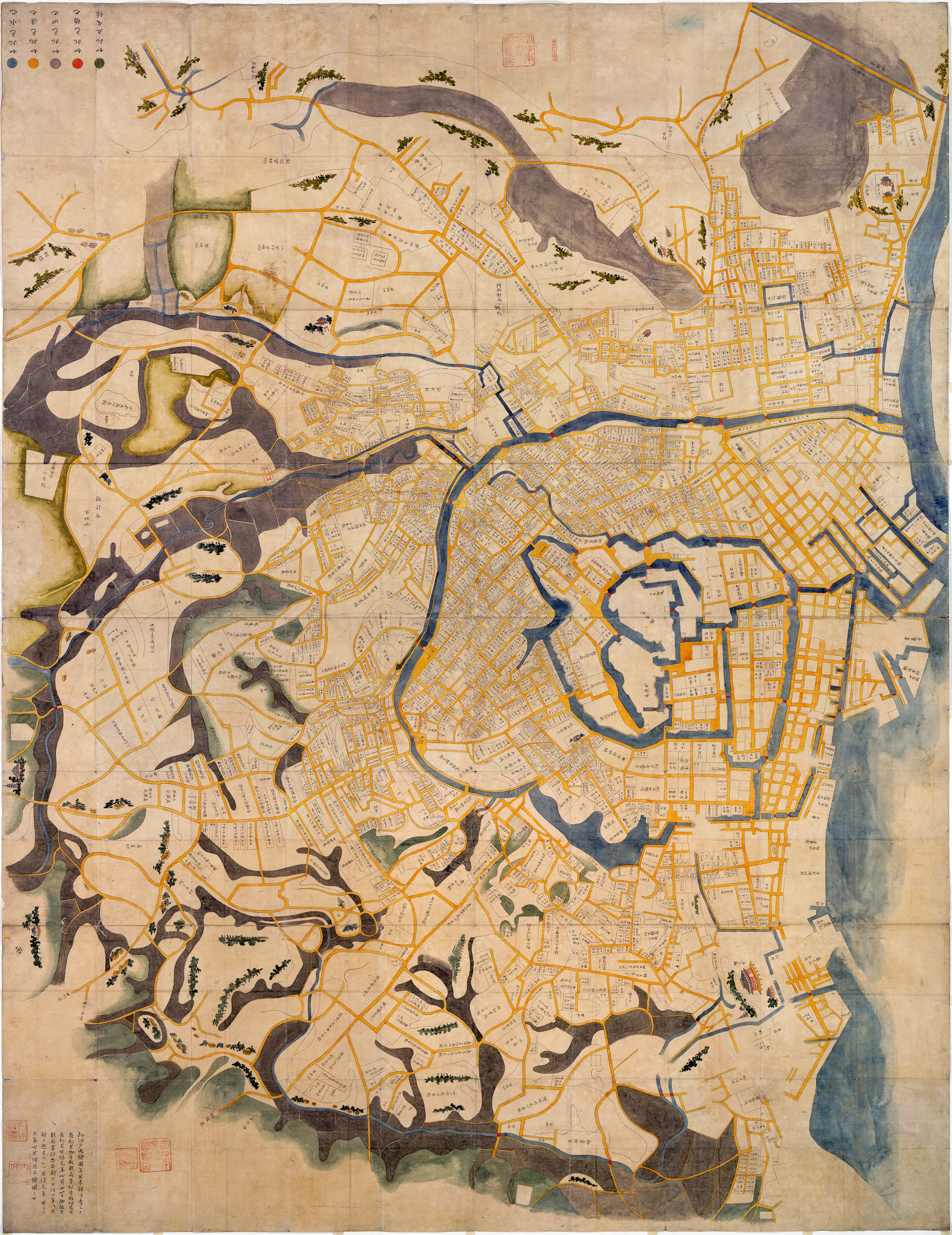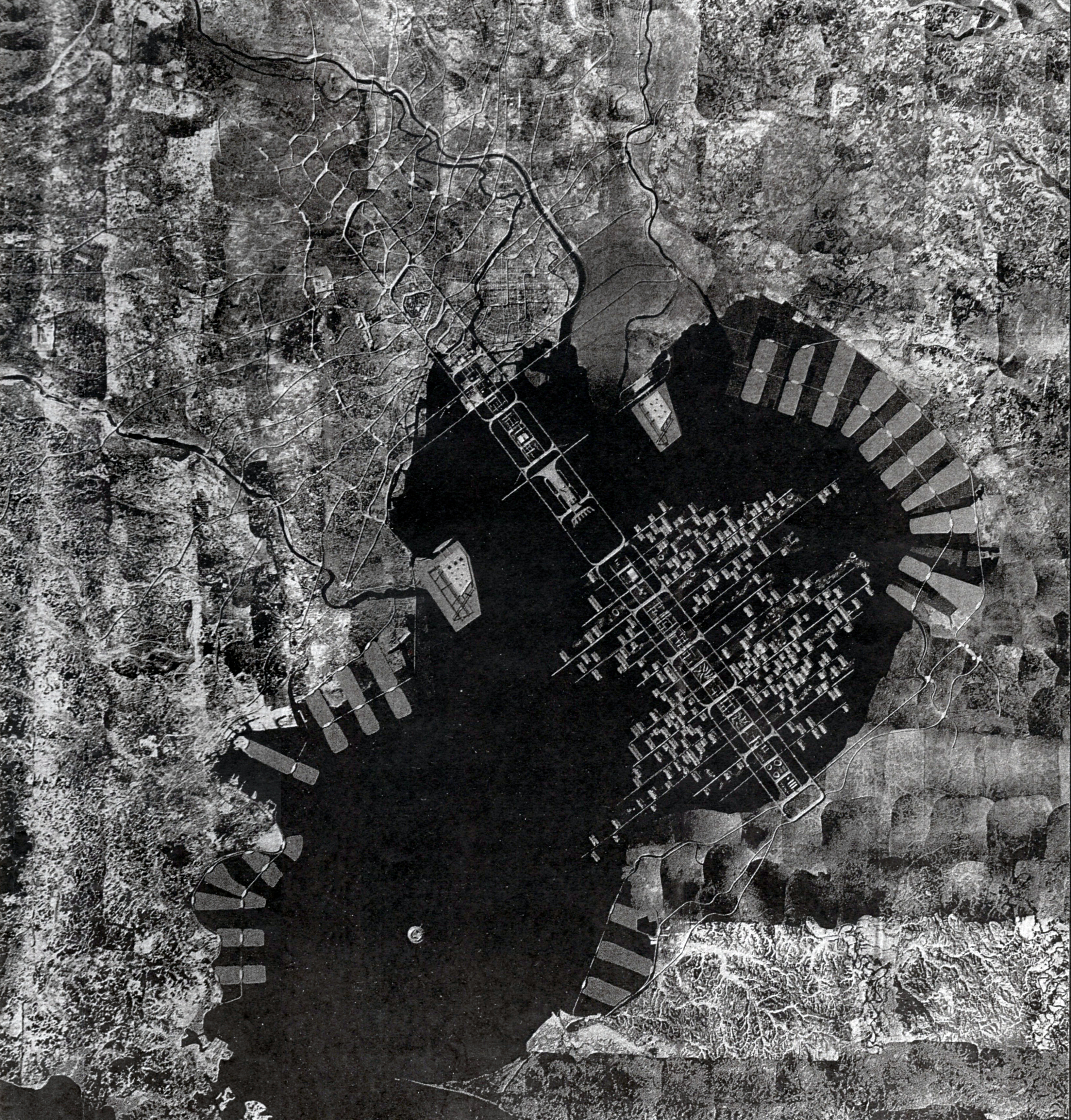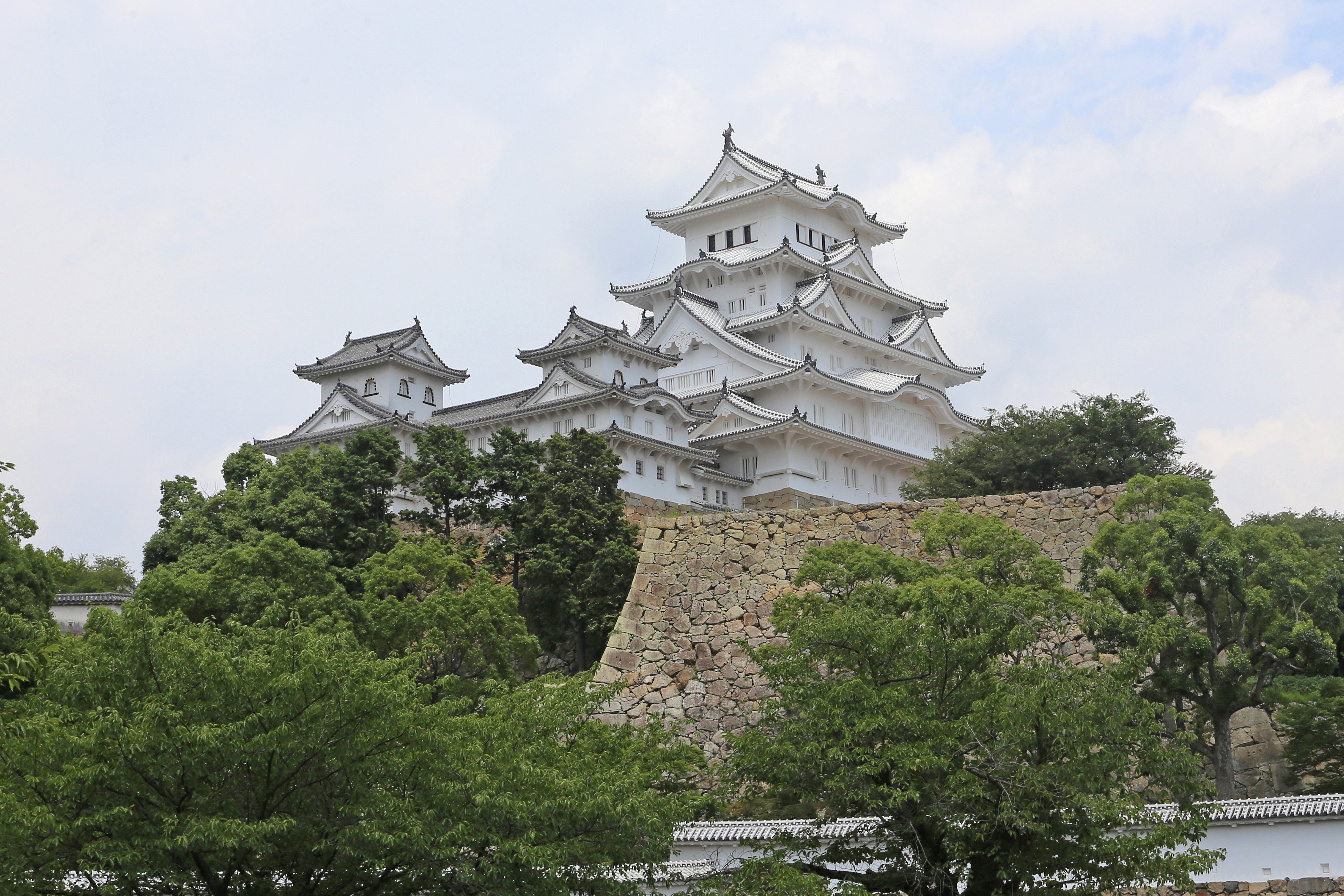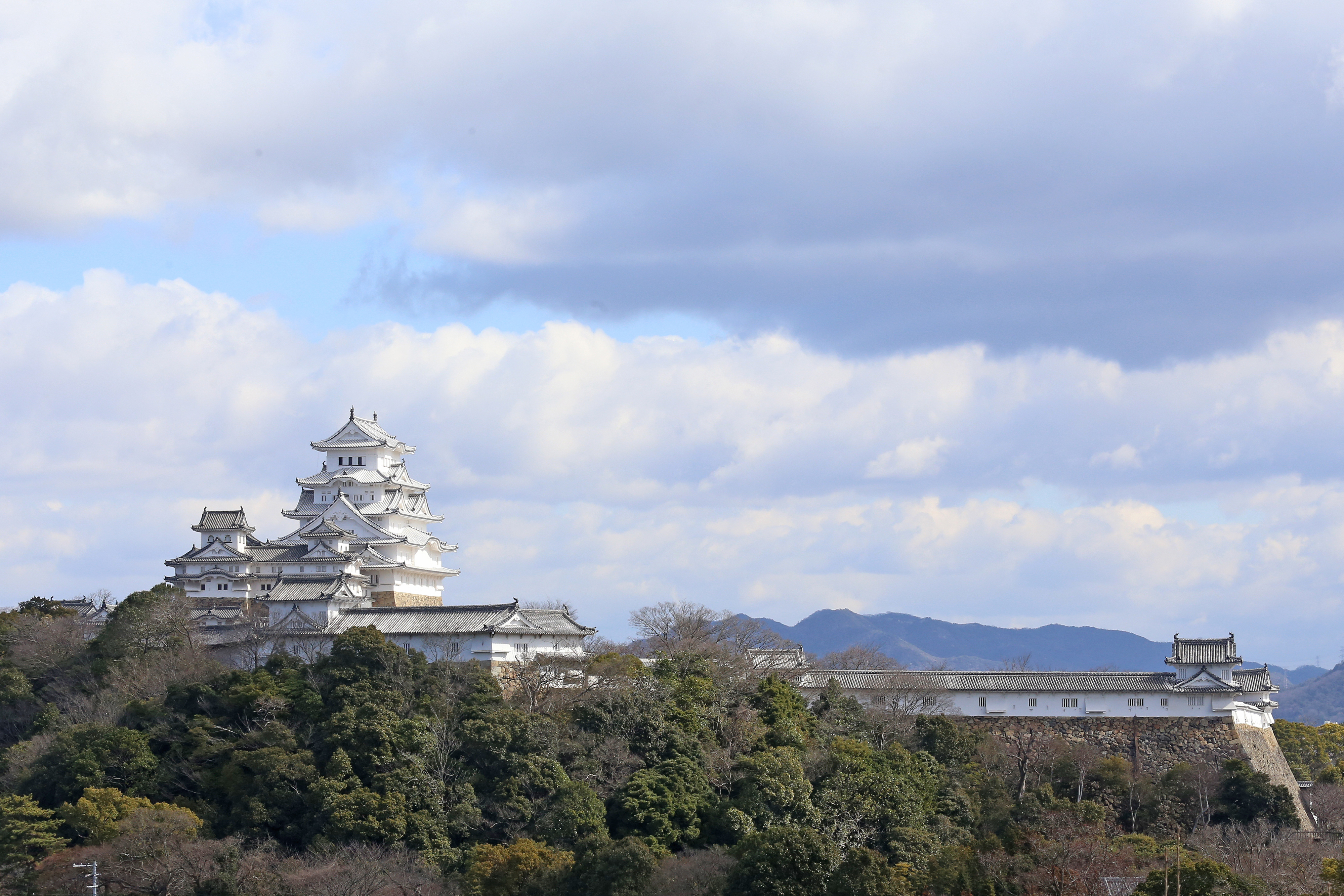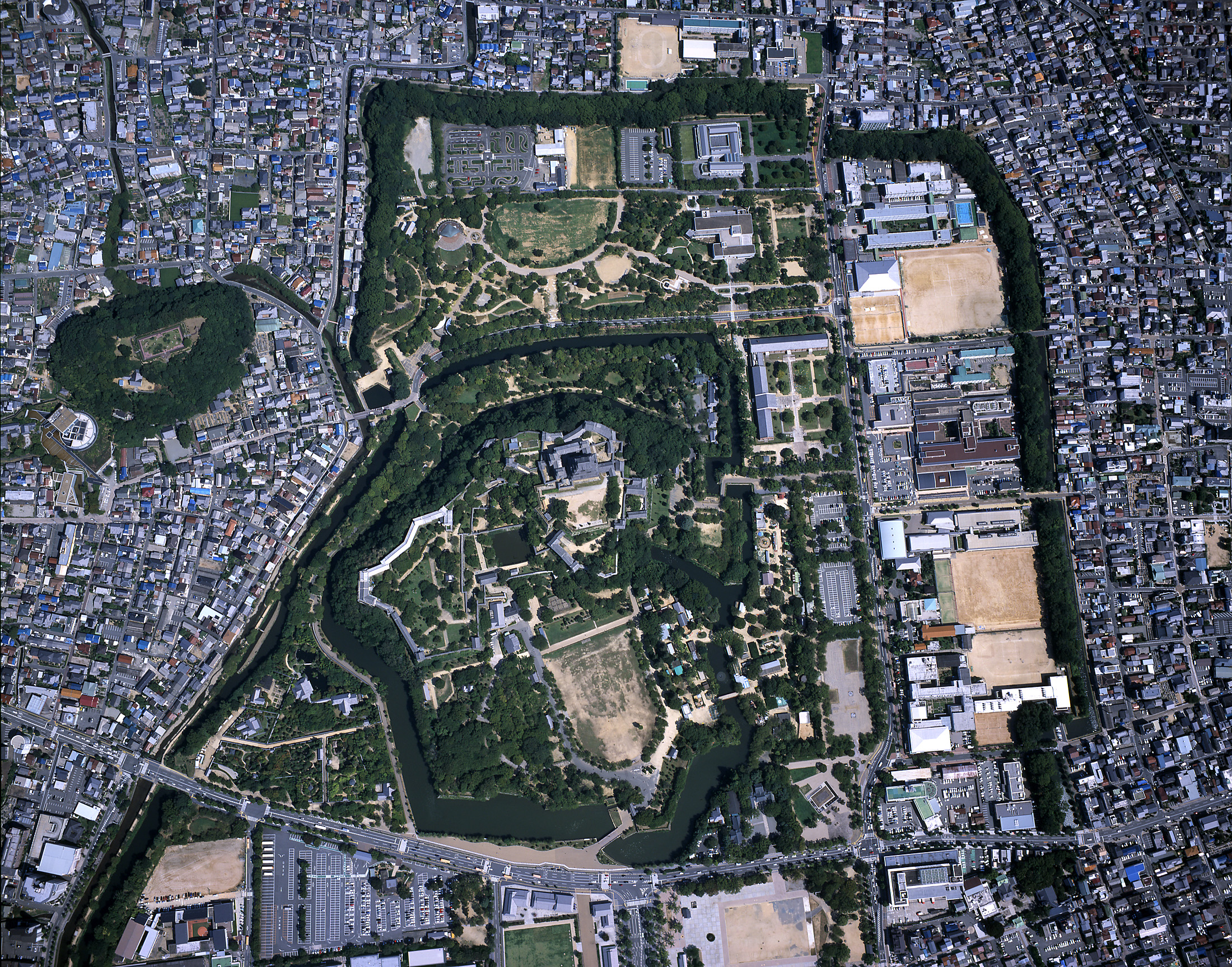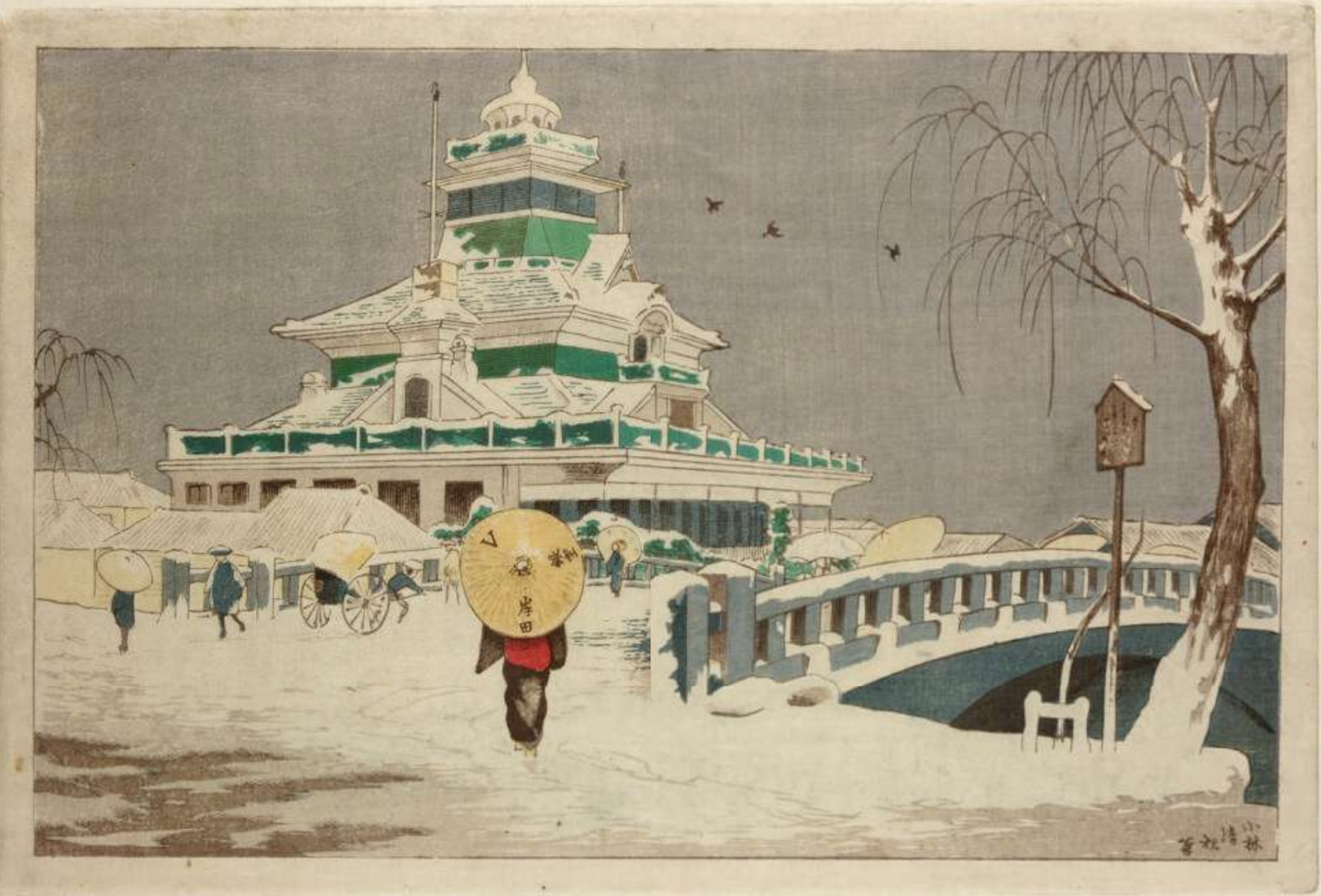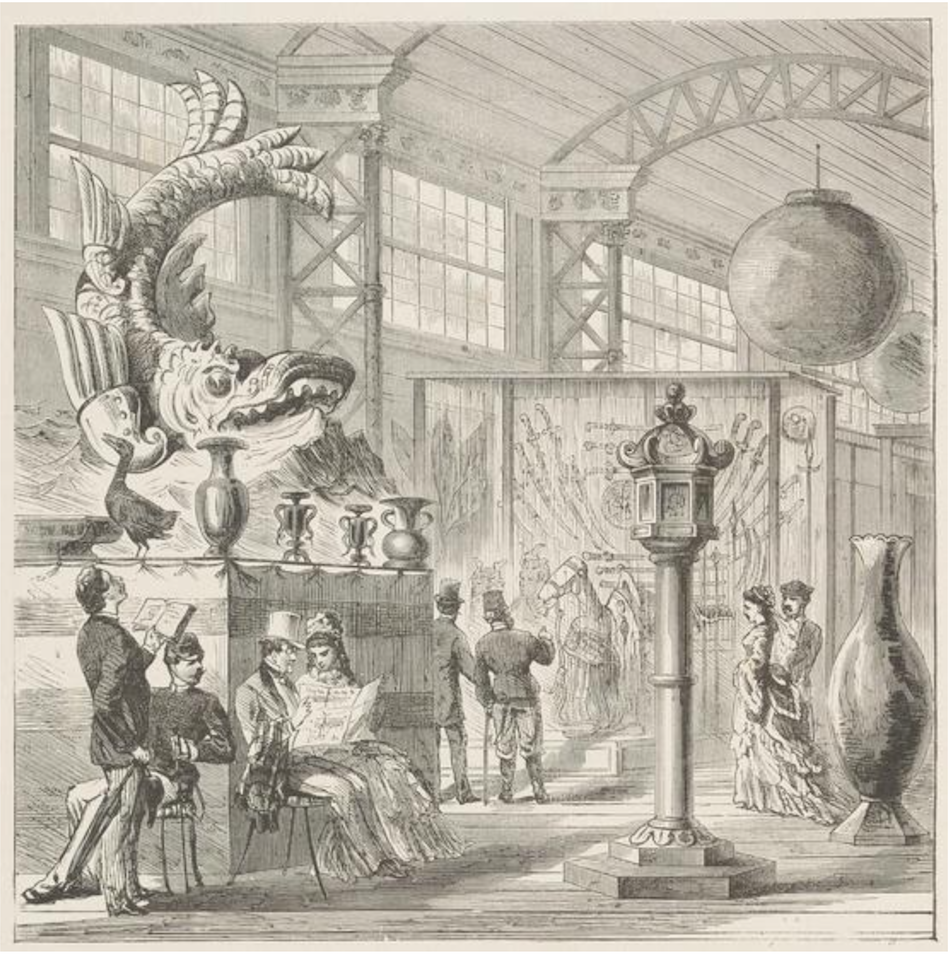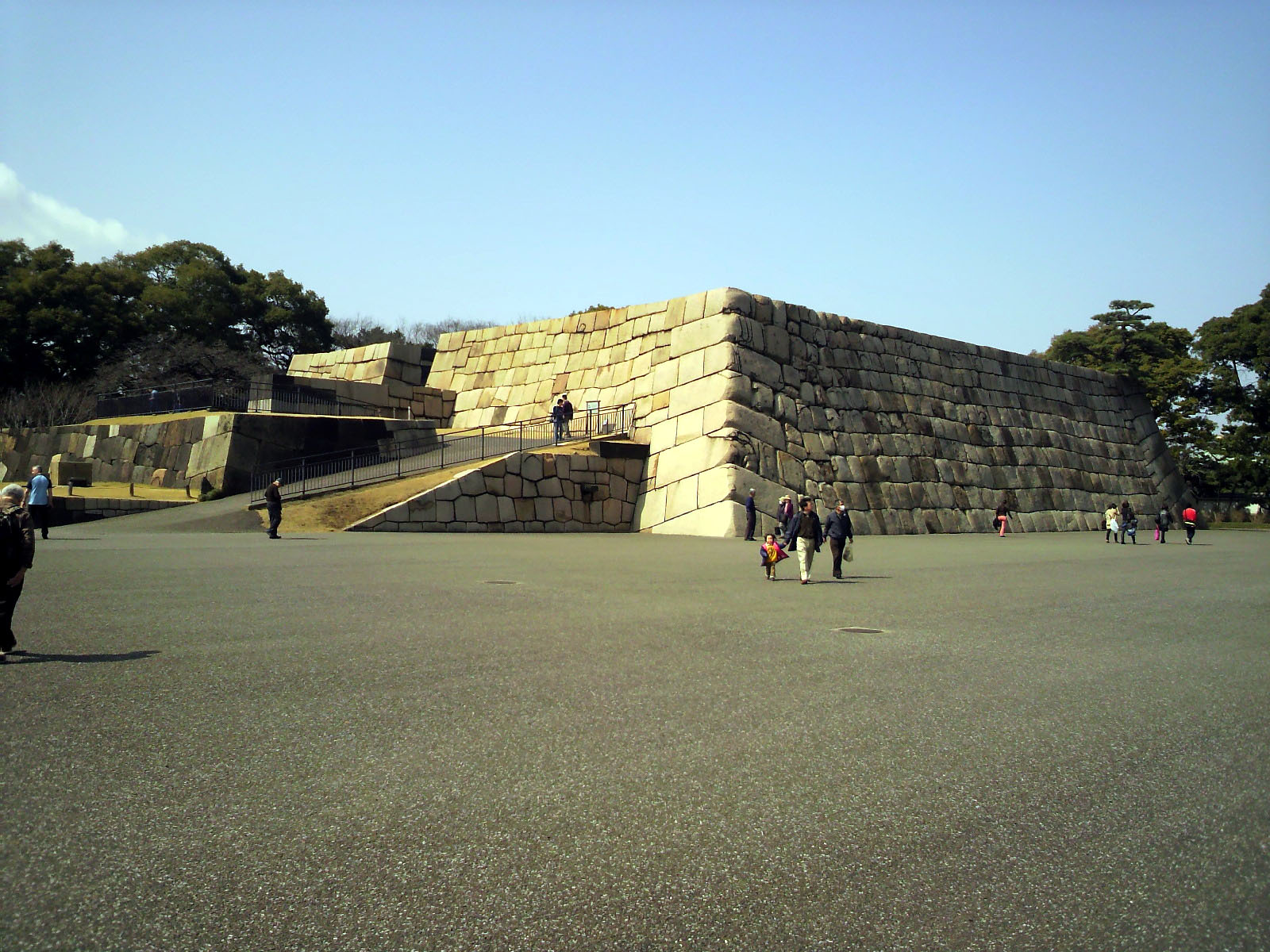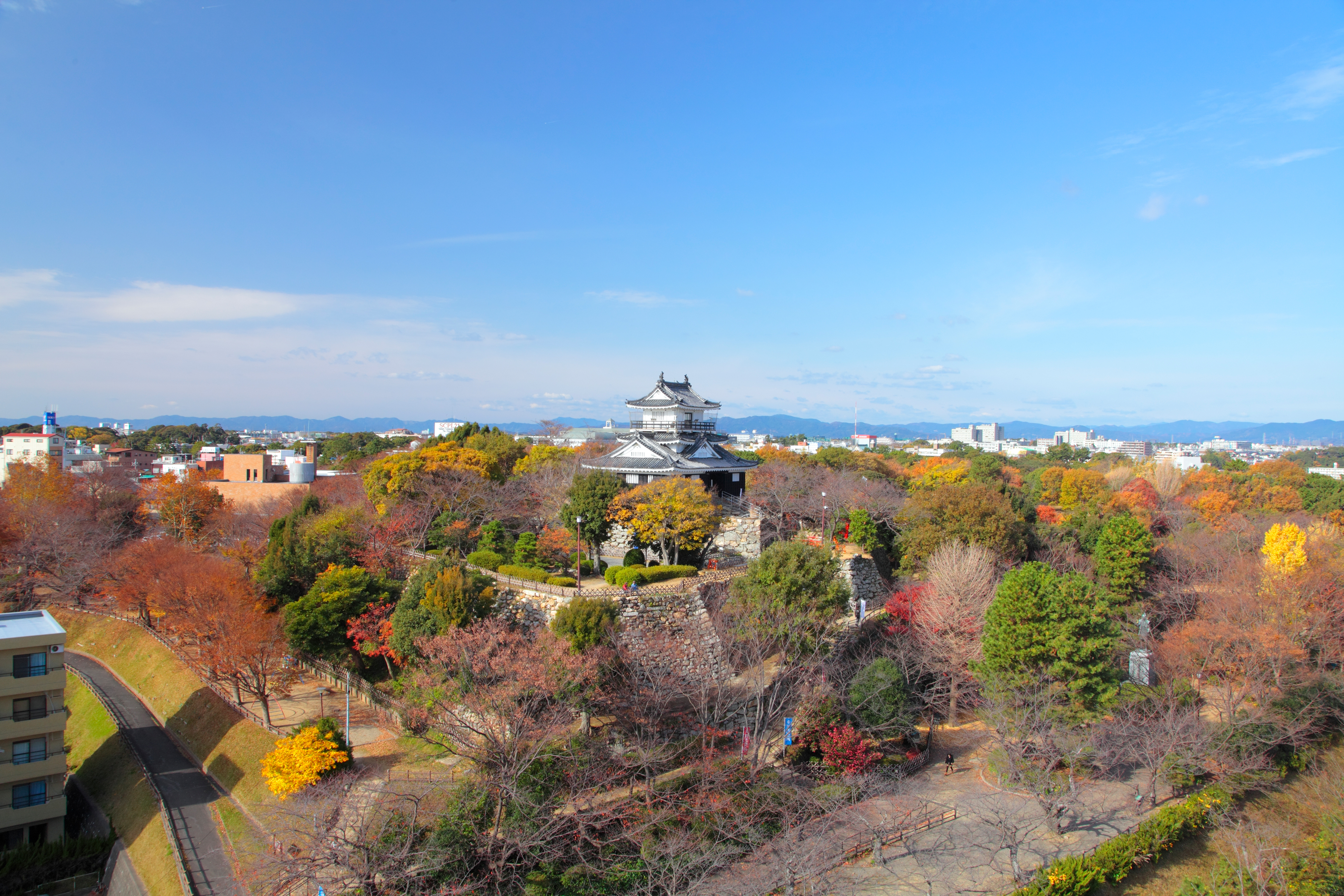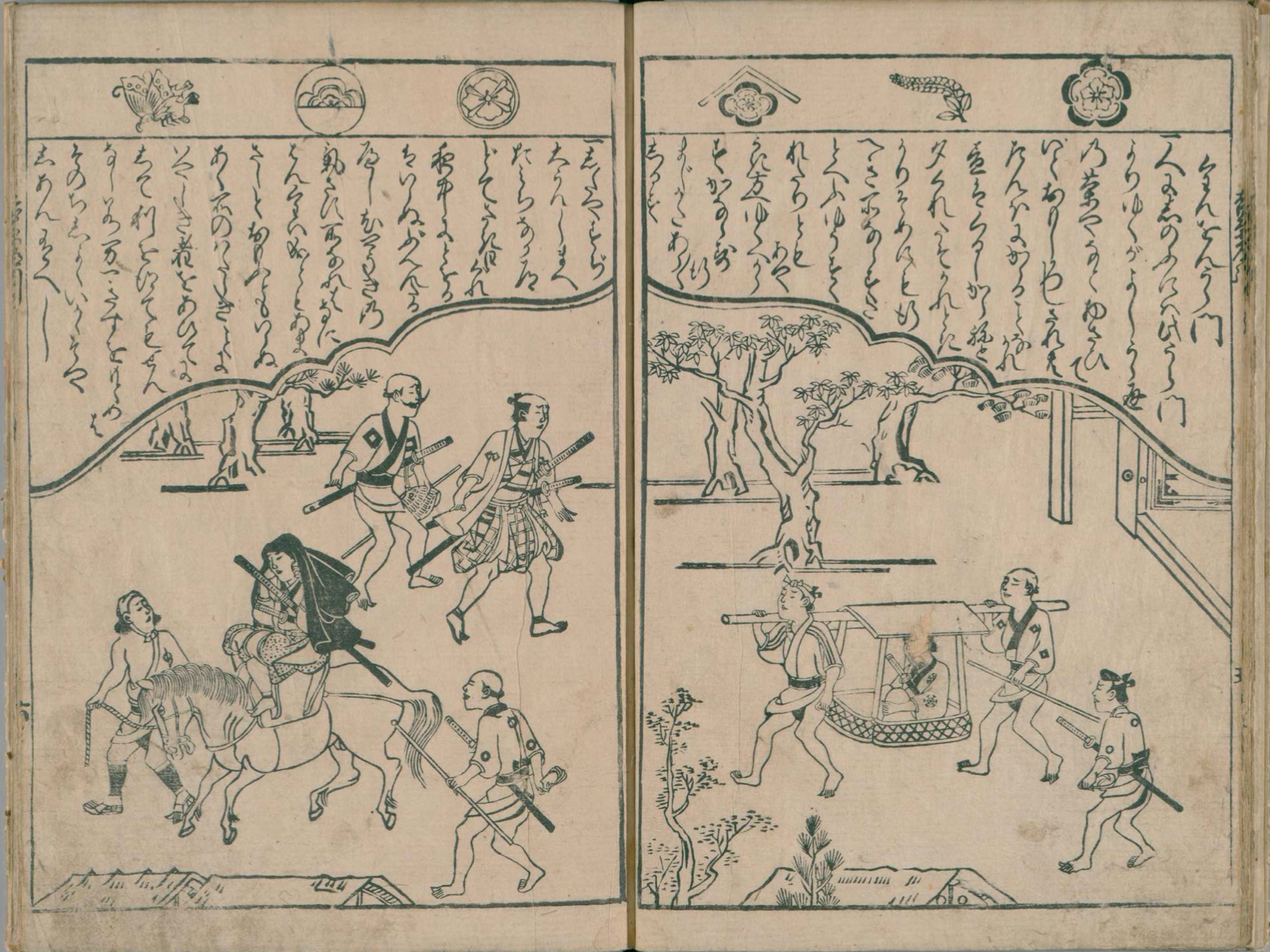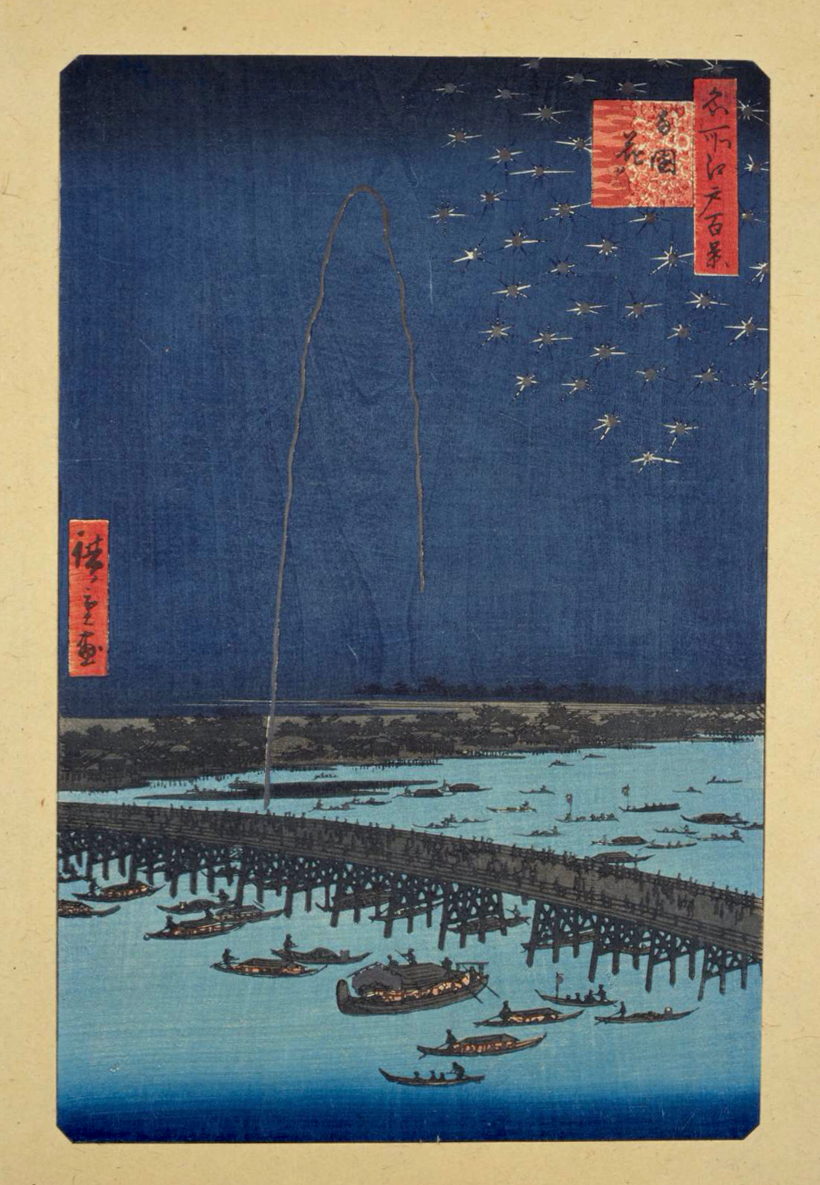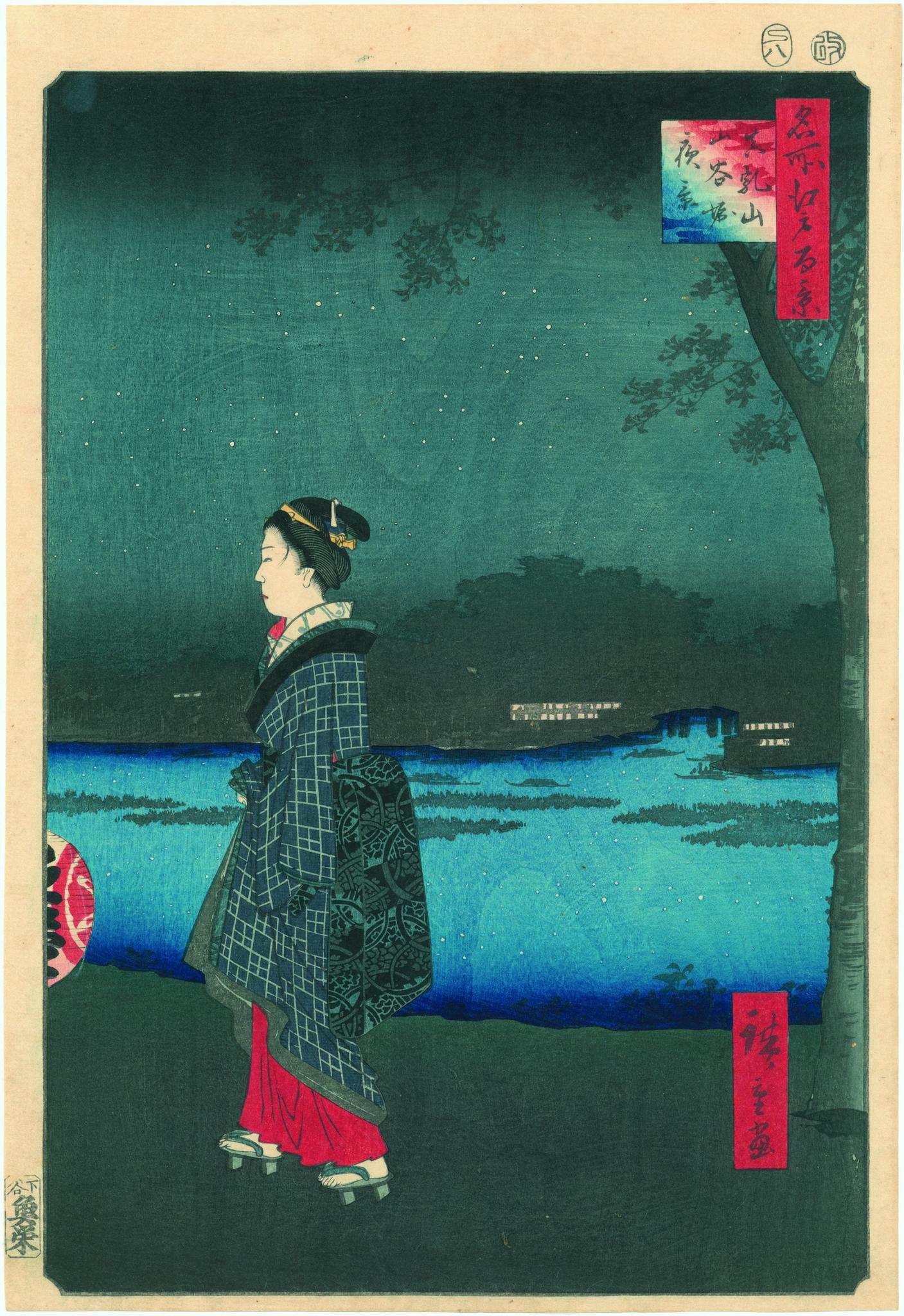Alone Again, Or: Two projects exploring life in Tokyo’s evolving fabric
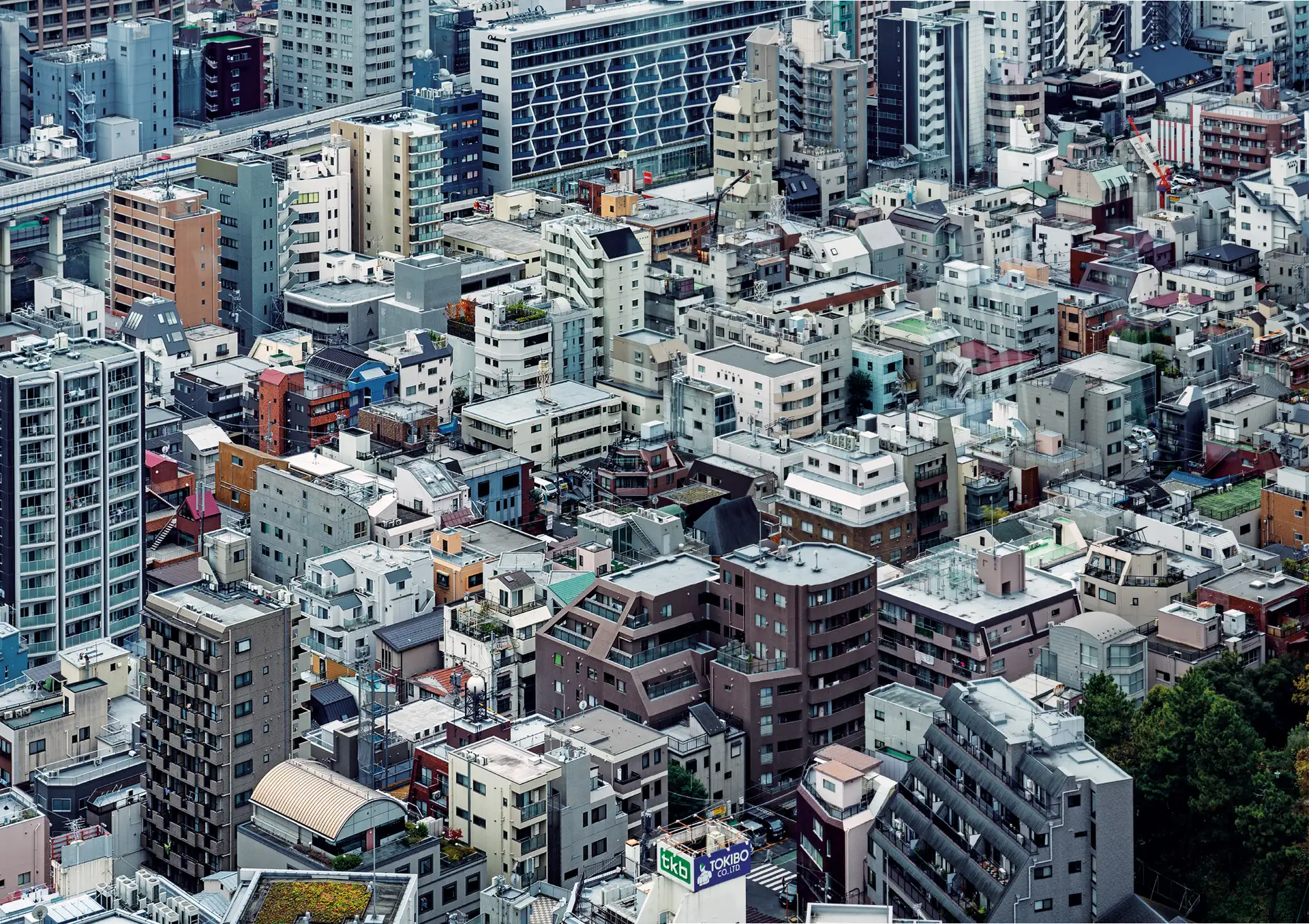
I want to address the history of Japanese cities, which is an area that I’ve been interested in, through the castle town. In many ways, I see the history of Japanese urbanism in the modern era as a history of trying to overcome the imprint of castle towns, which were scattered all throughout the Japanese islands. If we go way back to the very early history of Japan, the capitals were formed in a grid modeled on the Chinese imperial capital. But right around 1600 castle towns began to proliferate all over Japan.
There was a massive period of urbanization which saw the relocation of entire villages and agrarian communities to castle towns, right around 1600 or the first half of the seventeenth century. You’re looking here at a map of Edo, which was later renamed Tokyo. And you can see the form that the castle town assumes, which I like to think of as a spiral. And in many ways, the spirals are not just the master form of the city, but you might say the algorithm for growth in a castle town, that it actually extends outwards and grows in patterns along the logic of a spiral, which is dictated by the waterways and canals, which spin out from the moat of the castle and condition how transportation and trade occur in the city.
Shoho nenchu Edo ezu (map of Edo during the Shoho era, 1644/1945). Source: National Archives of Japan
And this is a form of city that I believe is unique to Japan. It’s not in Spiro Kostof’s famous book on the history of urban forms. Japanese cities don’t have city walls like you see in China and elsewhere. And so, in theory, this expansion of the castle town can be limitless. And some have described the expansion of Edo and later Tokyo as an almost limitless expansion that was circumscribed only by the bay. And even there, they keep filling it in. So the spiral is important to keep in mind for the modern era because, as I said earlier, there’s always a way in which city planning has had to deal with this strange imprint, which of course seems to run counter to so much of modern city planning. Or at least city planning based on an early modern European model.
Kazuo Hozumi, Great expansion plan of Edo in the form of the letter “no.” From Akira Naito, Edo no machi: kyodai toshi no tanjo (Tokyo: Soshisha, 1982)
I believe this circumstance influenced Kenzo Tange when he was a student at the University of Tokyo in the 1930s. He was an avid student of early modern European city planning. And he was desperate to find order to overcome this messiness of the spiral, which he saw as a bazaar that had been unsuccessfully transitioned into more recent times. And in some ways his famous Plan for Tokyo, 1960, with its axial dimension and its symmetry and its decision to disregard the messiness of the imprint and just rebuild much of Tokyo over the bay, is itself a condition of this legacy of the castle town.
Kenzo Tange, A Plan for Tokyo, 1960. First published in Shinkenchiku (March 1961)
For me, one of the interesting things about castle towns from the perspective of architecture is the castles themselves. These magnificent buildings take up the basic idea of East Asian timber-frame architecture in which you have a very heavy tiled roof and you distribute its weight to a perimeter of columns so that you have a very open inside area. It’s an architecture with no walls. Only load-bearing pillars. That vocabulary is manipulated and freely adapted to the castle. So it has lots of useless gables on all sides. It’s built up to great heights. It has lots of miniature turrets surrounding it. It becomes a full expression of the exuberance of traditional wood architecture in East Asia. But these castles were the most high-status buildings in Japan during the Edo period.
Himeji Castle. General view. Image courtesy of Himeji City
There were 260 domains in Japan, all of which had castle towns that were punctuated by these remarkable high-rise buildings. And then the city spiraled outward from the castle and kept growing and growing and kind of sucking people in from the countryside. Castles defined the skylines of the cities. They were the signature skylines of Japanese cities. And this creates an interesting situation when Japan transitions into the modern era in the late nineteenth and early twentieth centuries. You have all of these castles that have to be repurposed toward a new function. In many cases, they’re plundered—they’re taken apart and their components are reused. Today we only have a very small number of castles, and they’re all famous sites, such as Himeji Castle.
Himeji Castle. General view. Image courtesy of Himeji City
Aerial view of the Himeji Castle within the inner moat. Image courtesy of Himeji City
In the modern era, as architecture with a capital A is domesticated in Japan—that is to say, architecture as a system of institutions and practices that are domesticated in Japan from early modern Europe with an academy, a hierarchy, a set of procedures—as that is slowly being embraced in Japan, you have master carpenters trying to build modern cities and infrastructure, and they base their most important civic buildings on the model of the castle.
And you can see this in the wonderful transitional era, the late nineteenth century, in buildings such as the First National Bank in Tokyo. It was the federal bank. And it was built largely in the form of a castle. You have two floors in a vaguely Renaissance style, but then topped by a three-story keep with turrets and finials and gables, which recall the castle form. Most of these buildings are now gone, but for a while Japan was again repopulated with castlelike buildings. What’s interesting about this print is that it redacts the lower part of the castle out of the picture. This castle actually has lower floors that are not visible to us across this bridge. The emphasis is on the traditional portion of the building.
Kobayashi Kiyochika, Kaiunbashi Bridge and First National Bank, ca. 1876–1881
Castles fall apart and then they become remnants of history. And there are large castle roof ornaments like this dragonlike aquatic creature, with its tail upturned. It’s a rooftop gable ornament, probably from Edo Castle, which becomes a showcase of Japanese feudal society in international expositions. And these fragments of castles can be found everywhere if you look, actually.
International Exposition, Vienna, 1873. The interior of the Japanese pavilion with the golden shachi (mythical carp object used as a roof ornament of Japanese houses), as illustrated in Illustrierte Zeitung [Illustrated Times], 1873
In Tokyo, the center of the city was dominated by Edo Castle, which was the seat of the shogun, but after the shogunate fell and Japan modernized, it still had an emperor as a symbolic figurehead. And the emperor was asked to move from the Imperial Palace in Kyoto to the shogunal castle residence in Tokyo, where the emperor still resides with the imperial family.
This was an incredible breach of tradition, of decorum, of the traditional daily life of the emperor. And what you see here is the stone foundation of Edo Castle on the grounds of Japan’s Imperial Palace. And this has created an interesting situation where you have a vast castle ground without any high-rise buildings—a ground that has turned into kind of a national forest, sprinkled with imperial buildings in the center of Tokyo. Most of them can’t be entered by the public, which is what Roland Barthes famously called the empty center of the city. In my own research I’ve been interested in what this has meant to the modern era. There have been an infinite number of interesting and complex and even a few silly propositions about what to do with the center of Tokyo.
Remains of Ninomaru stone foundation at the Imperial Palace, Tokyo
The castle grounds still retain a forbidding military ground plan. You enter through a gate and you’re forced to turn right for some reason because that’s how it was at the shogunal castle. It always redirected would-be attackers into this very byzantine, labyrinthine route toward the castle to make it difficult to attack militarily. One still has to traverse this route to get to the Imperial Palace. There are many stories about how the emperor dislikes living in this building, and in fact, right after World War II, there was an opportunity to move the Imperial Palace, and the person known as the Showa Emperor petitioned very hard to have it moved to Nara, which is in the hinterlands in the west and was the ancient capital of Japan in the eighth century. And that didn’t go over so well with the politicians in Tokyo.
But the area of the imperial grounds not only creates this remarkable forested void—it reminds me of the demilitarized zone between the two Koreas on the peninsula—but it also is interesting in terms of the history of the development right around the penumbra of the Imperial Palace. And that alone is a really fascinating history of Tokyo, and you could work outwards in ever larger concentric circles from the old castle grounds, from the Imperial Palace toward this penumbra zone and the Yamanote line. And think about the various Ringstrassen of the city of Tokyo as one way of conceptualizing its cartography in the modern era, in the history of its urban development. So, for me, the castle town has been a very compelling way of thinking about the city throughout Japan.
Imperial Palace, a huge forested void in the heart of Tokyo. Image sources: ©Google Earth and Zenrin 2008
To end this discussion of the castle town on one final note, I’ll say that every regional prefectural capital in Japan adopted the French prefectural system in the late nineteenth century, and there are now some 47 prefectures. But each of the regional capitals of Japan was formerly a castle town. And if you go, you’ll find the imprint of the castle town city—you’ll find the castle walls and in many cases you’ll find rebuilt castles, rebuilt because the old castles were either destroyed in the nineteenth century or during the World War II air raids.
Hamamatsu Castle. Image courtesy of Hamamatsu & Lake Hamana Tourism Bureau
And what’s interesting about these castles is that they’re now symbols of peace. There are parks around the castles, and they’re very much conveying the message or the meaning of peace. They’re usually called peace parks or peace memorial parks. And you might say that closes the ironic circle and the life of the castle—built for military purposes, becoming administrative during the Edo period, and now serving largely as high-rise antiquated symbols of peace in the modern era.
I have been interested in particular in Edo, the most formidable castle town, one of the great cities in the world in the seventeenth and eighteenth centuries. And one of the aspects that has really fascinated me is the role of pictorial representation in the city. And of course this is such a rich and interesting topic, one that can be examined from so many different perspectives. But in the case of Edo, the print industry plays a fascinating role. It really begins to flourish in the mid-seventeenth century, coinciding with Edo’s transformation from a fishing village, circa 1600, into one of the largest cities in the world by around 1720.
There are many, many people coming into the city during this time, uprooted from traditional agrarian life and basically reinventing themselves in the city. And the publishing industry has lots of books and single-sheet prints and ephemera that survive and are clearly guidebooks for this newly emerging city populace. There are guides to the Kabuki districts, to the bordellos and the pleasure quarters. There are guides to the status system, what you can and can’t do and so forth. Of course, guides to shopping, to what kinds of figures to consult if you want to learn poetry, Confucian philosophy, and so forth.
And one of the things that’s really interesting about this is that publishers developed the concept of the floating world. In Japanese the term is Ukiyo, and in many cases Japanese woodblock prints are referred to as floating world pictures, or Ukiyo-e. The way I think about it, the floating world is a world of liberation and imagination in relation to the fixed world of social obligation, status, society rules that were very strict under the feudal regime.
The concept of the “floating world,” in A Guide to Love in Yoshiwara, by Hishikawa Moronobu, 1678. Source: National Diet Library, Tokyo
In this regime, if a samurai warrior, someone who was born into the samurai class and was allowed to wear swords, walked by you in the street, in theory, you, as a commoner, had to step aside and kneel with your head down until he passed. The floating world was the antithesis of this rule-bound world, but what was crucial was the way in which it was based upon fictional narratives of the city. It basically is like a second city in which very elaborate journeys to the pleasure quarters or to the entertainment districts or in the life of a commoner are expressed. And the idea was that this wasn’t unconnected to social reality in a sense that you, as a viewer—usually as a male viewer—could project yourself into this narrative and participate in the floating world.
And it’s this fictive nature of the city that runs in parallel alongside the actual development of Edo that’s fascinating, and there’s a wonderful and very complex, I would say, dialectical relationship between the floating world and the fixed world, if you will, of Edo throughout the seventeenth, eighteenth, and nineteenth centuries, which can be traced through print culture.
This extends all the way to the very famous print series at the end of the Edo period, the 100 Famous Views of Edo by Hiroshige, which I’m sure many of you are familiar with. They are really remarkable prints of the pleasures of the city. And they showcase very much the water and the leisure districts of commoners, but also very intimate scenes from the subject position of an insider, an Edoite who is visiting the pleasure quarters and knows the rules of the game and the secret codes, the secret urban codes of the city.
Hiroshige, Fireworks over Ryogoku Bridge, from the series 100 Famous Views of Edo, ca. 1856–1858. Source: National Diet Library
Hiroshige, Evening View of Sanya Canal, from the series 100 Famous Views of Edo, ca. 1856–1858
This history of the relationship between Edo and its representations is, I think, a really fascinating prehistory to what happens in the modern era and (although I haven’t studied this extensively) the more recent postwar history of city representations. It’s a very rich one, in film, in literature, and—of particular interest to me—in avant-garde photography of the 1960s. I have been interested in the photography magazine and collective Provoke, which, like many of these movements, only survived for a few years—three or four years, really—in the 1960s. Provoke was a photography magazine that, I would say, develops this avant-garde approach. It’s very much predicated upon the contingencies of Tokyo at the time, and in particular, the district of Shinjuku.
Provoke features many photographers who are famous in the Japanese art world, figures such as Daido Moriyama, and a very impressive critic by the name of Takuma Nakahira who develops a theory of landscape based on photography. And in particular, they really focused on the district of Shinjuku, on the western outskirts of the city, a zone that was always being redefined—occupied by the US army in the immediate postwar period, the site of a black market in the 1960s, a site of intensive protest, and also the seat of a flourishing avant-garde culture. And it’s in the streets of Shinjuku that the photographers of the Provoke movement really developed their signature style, the grainy/blurry style as it’s called.
Provoke tried to bring an aesthetic to photography, which is about the sensorium of the city, of walking through the city. A blurry and fragmentary experience, but something that’s specific to photography itself. They also were very focused on breaking down the status between documentary art, documentary photography, and art photography. Especially in Japan, documentary photography is always associated with the street, with getting out into the street and knowing the city. But the Provoke collective found this art/documentary opposition to be silly, and they sought to overcome this binary opposition. And they really developed the idea of Shinjuku as an urban darkroom for their experimentation.
So that’s about all I’ll say about some of my interests related to Edo/Tokyo and urbanism.
Mohsen Mostafavi: Thank you so much, Yukio. This is a really amazing array of material. It’s interesting to see how you’re essentially bringing the seventeenth century into the present and connecting these two eras through this issue of images of the city or the representation of the city.
Early on, you spoke about the role of the castle towns and the fact that they didn’t have walls, but that they spiraled outward. But all castles are somehow linked to a concept of defense, of keeping out the unwanted. Could you explain how the castle town addresses this conflict between the idea of the spiral as a form of endless growth and the idea of exclusion?
Yukio Lippit: I think there are obvious and not so obvious ways of thinking about this. One is simply the nature of the Japanese islands, which are 86 percent mountains. Civilization emerged in the remaining 14 percent—in the basins. And so city planning has always been highly aware of the topography. The mountains were the walls, and in many ways, choosing the right basin in which to establish the castle town was the first act of urbanism.
But there are other important factors that relate to this tension. Castles are born just as Japan is being unified. And the warlords face a problem—they have to build defensive structures that also serve as administrative centers for newly conquered and newly reunited territories. A mountaintop castle, which is remote and very easily defensible, is highly inconvenient for administration.
As a compromise, they built high-rises on flat land. Castles were always built as high as one could build on an earthquake-prone island with timber-frame architecture. They really pushed the limits of that system of engineering. In fact, what’s interesting is that the castle itself, the physical structure, is maybe a few towers and surrounding turrets, but it’s landscaped with an extensive system of moats and low-lying walls that serve in a strange way to bring the enemy into the city, the idea being that you then surround and attack them from all sides. So it was never the case of trying to keep them out of the city completely. And it was already turning into peacetime. Much of the bizarre and even crazy logic of defense just becomes urbanism itself. The moats and the pathways leading to the castle became the fabric of the city, extending outward until you reached the mountains or the bay.
Mohsen Mostafavi: You mentioned the relationship of the castle to the landscape. On one level, the idea of landscape as a form of buffer, because it creates distance, but this landscape is also linked to the moats, to rivers, to water. And these elements are part and parcel of…maybe I can call it a holistic, integrated ensemble, which is the castle and the water and the landscape. There’s a coherence. And when you show, for example, the representations by Hiroshige, these are also fundamentally on one level landscape drawings. They’re seeing the city through the lens of a landscape in many instances.
This is a very powerful history and a very powerful presence in nineteenth-century representation. But for most people today, the experience of Tokyo is not through this idea of landscape. The canals have been covered over, the waterways have essentially disappeared. Do you have some thoughts about this discrepancy in terms of the history of the city—the presence of landscape in the nineteenth century and its disappearance in the contemporary city?
Yukio Lippit: In Edo prints, generally speaking, urban man-made structures are always framed within the context of a natural world. And when you think of it that way, it’s more of the relationship between man and nature, between the built environment and nature. And I would say that that’s still very strong in an internalized way. In the side streets of Tokyo there’s a lane life, as they say, and there are always a few potted plants in front of residences, no matter how modest. That internalization of the natural world within one’s residential circumstances is always strong, even in a hyper-dense Asian megacity.
Mohsen Mostafavi: I think your point is well taken. But in terms of visual culture, you can’t deny that previously this integration was visible, both in prints and in terms of the formation of the artifact of the city. And today, on that scale, it’s not visible and therefore internalized, often in very beautiful ways by many contemporary architects. But when you see the work that was done for the Olympics in 1964, the whole concept of modernization effaced a lot of these old elements of the city, like canals. So, despite this incredible national sensibility, somehow westernization was able to make these natural elements essentially disappear.
Mohsen Mostafavi: I’d like to ask you a little more about this wonderful, beautiful concept of the floating world and the notion that, through representation, you create, not a simulacrum, but a form of otherness to the city—a fictional, imaginary city. How did the concept of the floating world come about?
Yukio Lippit: As Japan urbanizes in the seventeenth century, you have the transition of a country of remarkably small cities. Before 1600, the largest city in Japan was Kyoto, which had maybe 80,000, 90,000 residents at most. Within 100 years, Edo has a million-plus people, all relocated within two or three generations.
Now, in publishing, woodblock printing is driven by the needs of the writing system. It’s a fascinating cultural fact—Japanese calligraphy is continuous, with no separations between the characters. Movable-type printing doesn’t capture that, so woodblock printing, where the entire page of flowing calligraphy is carved on a single block of wood, is the way that books are published.
That lends itself well to pictures. From the beginning, Japanese books are always heavily illustrated, and this pictorial dimension of publishing and writing is one of the things that drives the importance of prints to city life. But also what happens is that designers and publishers and authors repurpose a traditional vocabulary, a traditional Japanese pictorialism that had always privileged a projective aesthetics in which someone who was very learned, like a courtier, would bring erudition to a very generic set of figural drawings. And they would project The Tale of Genji or a famous classical Japanese text onto the characters. That was the mode in which pictures were appreciated.
The same pictorial vocabulary with a highly generic type of figuration was repurposed for commoners. It was more important to show the figures in relation to one another in the city than to create a realistic portrait of a person with verisimilitude. That approach lends itself well to projection—to viewers imagining themselves in such a scenario, a vignette. That presupposition of anonymity and projection is very important to the way the floating world develops.
Already in the mid-seventeenth century, you see remarkable stories of the twelve stages of a romance between a man and a woman, which can be a journey from the center of the city to the Yoshiwara. It is like a walk through very disparate neighborhoods and status-zoned parts of the city. And it’s clear that many people reading these books aren’t actually able to execute the actions of the storyline. This, for them, is the way they are vicariously experiencing the city. This begins to develop its own life. Similar characters and neighborhoods keep showing up in this regime of pictures and become, as I imagine it, a kind of a parallel urbanism to the urbanism of Edo itself, which again allows people to step outside the rules of status.
In Edo, status was the way that the society was conceptualized, and you were born into status. You could be a warrior or a commoner or a farmer or a merchant. And you couldn’t move up or down, at least not in theory, although the reality on the ground was a bit more complex. And so the status society was a big precondition for the floating world, where you could be anybody. You could imagine yourself as any fictive protagonist going through the city and going into places that you had no business being in.
Early on, what was depicted was a set of forbidden spaces in the city. Over time, these were progressively normalized. By Hiroshige’s era in the late nineteenth century, it’s a much more genteel…a mainstream, middlebrow experience of the city. So fireworks over the Sumida river, a sudden shower over the Ohashi bridge, these kinds of prosaic scenes of life in Edo.
Mohsen Mostafavi: Do you think that the prints were ultimately liberative devices in the sense that they demonstrated the possibility of breaking down barriers of status? Or were these pictures actually constructing a false reality in the same way that, for example, Bollywood produces thousands of movies about the poor boy who is going to marry the rich girl. His status is going to change. But these things never happen. It’s a form of fiction that provides momentary pleasure.
So are these floating worlds really providing a politically important work? Or are they basically whitewashing the reality?
Yukio Lippit: By the late Edo period, it’s people like Hiroshige and samurai warriors who are making prints. That’s because their status group has become impoverished, especially the so-called lower samurai. Samurai account for about ten percent of the population, and theoretically, they are the most important people in the land. But they become very resentful because their stipends are fixed and they’re becoming poor, while commoners around them are flaunting their wealth.
It’s really these lower samurai who become the consumers and creators of the floating world. They are the ones who eventually overthrow the shogunate. They’re the ones who eventually lead the Meiji restoration and modernize Japan. And they do so because the system isn’t working for them, and they’re associating more and more with fantasies of commoner culture, with the escapism that was meant for another status group. So in a very strange way, the prints do play a political role, but not in the ways that one would anticipate at the beginning of the Edo period.
Mohsen Mostafavi: Let me ask you, too, about photography and groups like Provoke. Obviously, Shinjuku was a vibrant place, home to many artists, filmmakers, actors, theater directors. And you mentioned the relationship between photography and Shinjuku itself, and how they fed off each other. Shinjuku provided the subject matter that drove the photographers, and the photographers and other artists together created an avant-garde. This reciprocity is often cast as something political through some of the art movements and especially the role of Shinjuku station. It was a site of protest.
What has happened to that site in the contemporary city? Why did movements like Provoke last only a short time? Where is this space of dissent today in Japanese culture or Japanese cities?
Yukio Lippit: There are wonderful unregulated zones in any city, and in traditional Japanese cities, it was always the dry riverbed. In the dry season, the river dried up and nobody owned the riverbed. It wasn’t taxed. The city had no way to regulate it. So that’s where the street performers and entertainers and sex workers and all of these people who were in some sense outside of society would congregate.
Shinjuku was constantly being reinvented and reappropriated—by the black market, the US occupation, various entities. And for a time, the avant-garde really owned the site, despite the fact that it had a station, some businesses, some residential districts. I think about it as an unregulated space where there was much more freedom.
And then a lot of factors come into play. Generally speaking, Japan’s economic miracle. There are many theories about this, but William Marotti, a scholar at UCLA, talks about the process by which the state basically buys off the culture of protest through the economic miracle. And the avant-garde is very much formed and articulated in the 1960s against the politics of daily life. Some would argue that that culture ended in 1960, but there are vestiges of protest that continue and flare up, at the 1968 student riots, for example. But it’s already on a long decrescendo, you might say, by the time Provoke comes into existence, partly because of the economic miracle and partly because it’s generational.
People born into economic prosperity are formed very differently, their outlooks are very different. What does happen is Otaku culture—a culture of solitary, internal protest, essentially enabled by the Internet. It’s predicated upon what you might say is either a rejection of urbanism or a reconstitution of community on emerging digital platforms. It’s a culture of protest, but not necessarily directed at the state. Contemporary artists, Murakami and others, have thematized this transition from a culture of protest to Otaku culture. That’s where I would locate some of the aftermath of the 1960s Shinjuku protest, culture, and movements like Provoke.
Mohsen Mostafavi: In some of our conversations with young urbanists and planners we have heard about this loss of power and the rejection that you describe. It seems some designers are gravitating to the suburbs or the countryside because they find it very difficult to have a meaningful impact in Tokyo with its large-scale developments. So they’ve created smaller affiliations, smaller organizations, and so on.
I want to end with another aspect of the contemporary representation with photography. I loved hearing that Daidō Moriyama saw Shinjuku as the stadium of people’s desires. And really thinking about the city, especially Shinjuku, not only in terms of politics, but also as a site of eroticism. Many of these photographers had a kind of erotic relationship with the city. And of course, in the case of Shinjuku, it’s eroticism both in a philosophical sense and in a literal one, given what was going on there. What are your thoughts about this question of desire and eroticism and urbanization?
Yukio Lippit: What you say about Japanese photography of this period is absolutely true. The erotic charge of avant-garde photography in Japan is remarkable over a span of many decades. There are, again, a number of ways of approaching this: one would be the intense, double conformity that artists are reacting against in the 1960s. Both the rise of the so-called salary man, the highly instrumentalized postwar Japanese man, modeled vaguely upon the successful American businessman who outsources his entire personal and family life to the company. He is seen as desexualized, too, as de-eroticized, you might say. And also there’s the legacy of the morality of a highly Confucian and, you might say, Buddhist, Shinto society that people are reacting strongly against.
But there’s also a way to see this as an extension of the concept of the floating world, although it’s internalized instead of projecting onto a representation. You are the figure carrying the body cam of the protagonist in these fictive worlds and in photography. To be an artist in Shinjuku at that time was to be a flaneur on the streets interacting with (if not engaging) sex workers, visiting nightclubs, taking drugs, participating in street protests and every form of moderately illegal activity that Shinjuku offered. Inhabiting those subject positions was part and parcel of being an artist. It was very much about reflecting that subjective experience of being the insider of Shinjuku in photography, whatever that meant, capturing that sensorial moment, excitement, contingency, confusion in the photograph itself.
The first part of this essay was transformed from a lecture for the seminar, “The Project and the Territory,” offered at the Harvard GSD in the semester Fall 2020.
